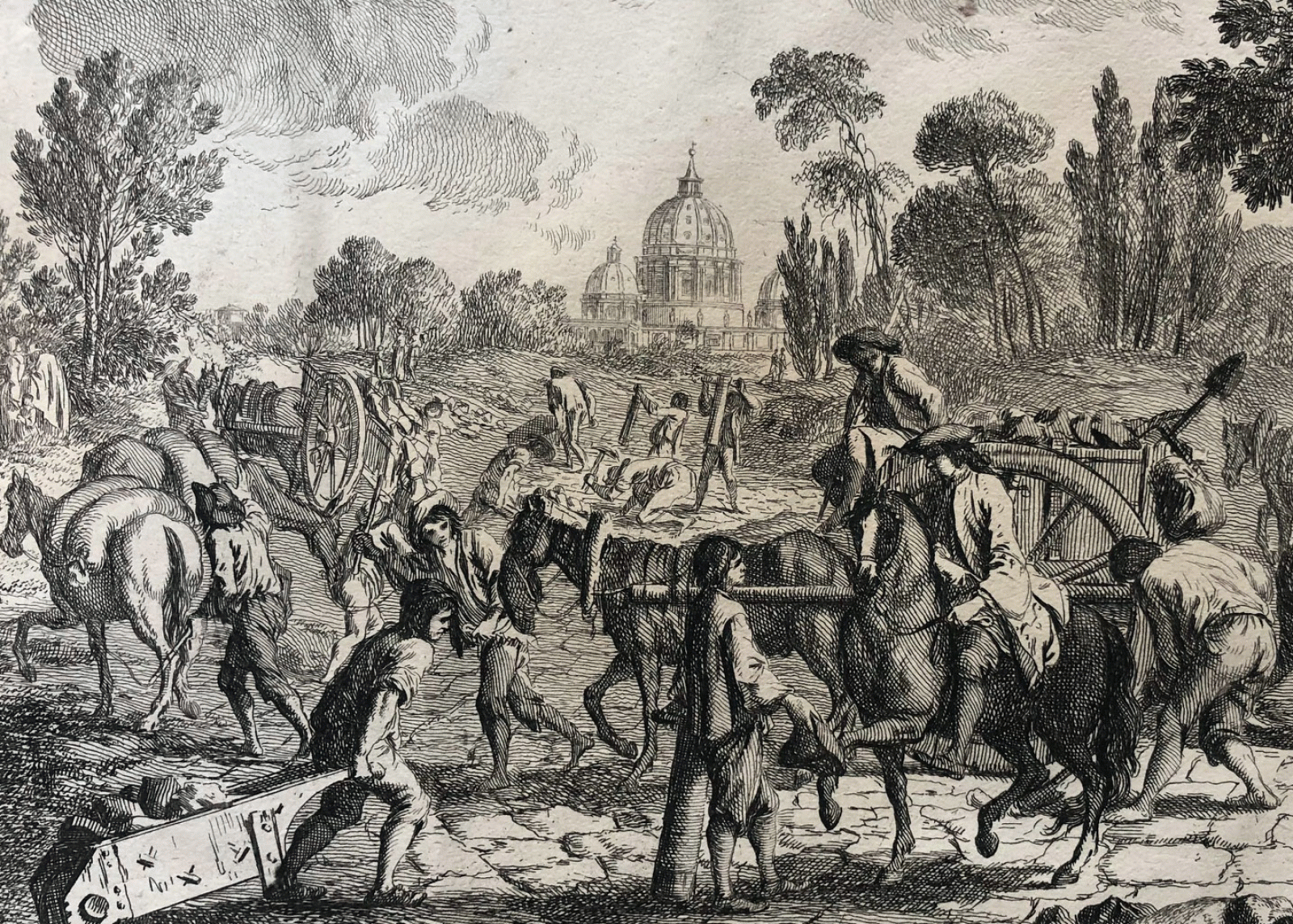KHI 2021+ Lecture Series
Niall Atkinson: Roman Stories: Mapping the Foreigner’s Urban Narratives and the Representation of the Early Modern City

Jean-Baptiste Marie Pierre, Figures dessinées d’après nature du bas peuple à Rome, pl. 30, print, 1756
From the sixteenth century, as Rome’s ancient past was increasingly unearthed and spatially reordered within the haphazard, sometimes tumultuous, and often gradual series of urban transformations, travelers were producing a whole series of representational strategies for taking account of the emergence of both the ancient and the modern city. This temporal dialectic was often the subject of experiments by artists, architects, and writers, who sought to give order and meaning to the material juxtaposition of the newly rising metropolis and an increasingly ‘staged’ classical past. The traces of these physical encounters between the people and the city can be seen in the innumerable images and texts produced by foreigners who confronted the strange familiarity of Rome, whose effect has long been seen in the development of pictorial genres such as landscape painting and the architectural capriccio. This project, however, is concerned with tracing the way in which Rome was emerging as a visual and mental image through a dialogue between the foreigner and the papal city. The itineraries of foreigners, where bodies in motion engaged directly with objects, buildings, history, and memory, were an important part of the construction of Rome’s modern image. French travelers, in particular, brought with them certain practices of wandering and sensorial immersion that became a popular practice in the formal and informal cultivated landscapes of the grand new sixteenth-century villas. Based on ancient prototypes, such landscapes provided settings for an aestheticized mode of wandering that was then brought into the properly urban setting of papal planning policies, where it reconfigured the experience of the city as an evolving series of discoveries of ancient and modern spatial ensembles.
Niall Atkinson is Associate Professor and Chair of the Department of Art History at the University of Chicago. His research focuses on the experience of architecture and urban space in early modern Italy in order to understand the built environment as a collective social construction of the body’s sensorial apparatus. His recent work has explored the role of sound, space, and architecture in the construction of civic society. He is currently co-writing a book (with Susanna Caviglia, Duke University) on the urban visual and spatial effects of the narratives and itineraries of French travelers upon the configuration of Rome as an early modern metropolis. He is also experimenting in digitally mapping the data of the1427 tax census of Florence (catasto), while future projects include the role of city descriptions in mediating cultural exchange in early modern Mediterranean travel, as well as an ongoing interdisciplinary collaboration exploring the cultural interactions of the Indian Ocean.
This talk is part of the KHI 2021+ Lecture Series, organized by the doctoral and postdoctoral fellows, in collaboration with scientific staff and senior scholars of the Institute. It is envisioned as a forum to reflect on the futures of Art History through conversations with innovative voices in the discipline, working in different areas but sharing methodological concerns.
08 marzo 2021, ore 18:00
KHI 2021+ Lecture Series
The event takes place online.
Avviso
Questo evento viene documentato fotograficamente e/o attraverso riprese video. Qualora non dovesse essere d’accordo con l’utilizzo di immagini in cui potrebbe essere riconoscibile, da parte del Kunsthistorisches Institut in Florenz a scopo di documentazione degli eventi e di pubbliche relazioni (p.e. social media) la preghiamo gentilmente di comunicarcelo.


